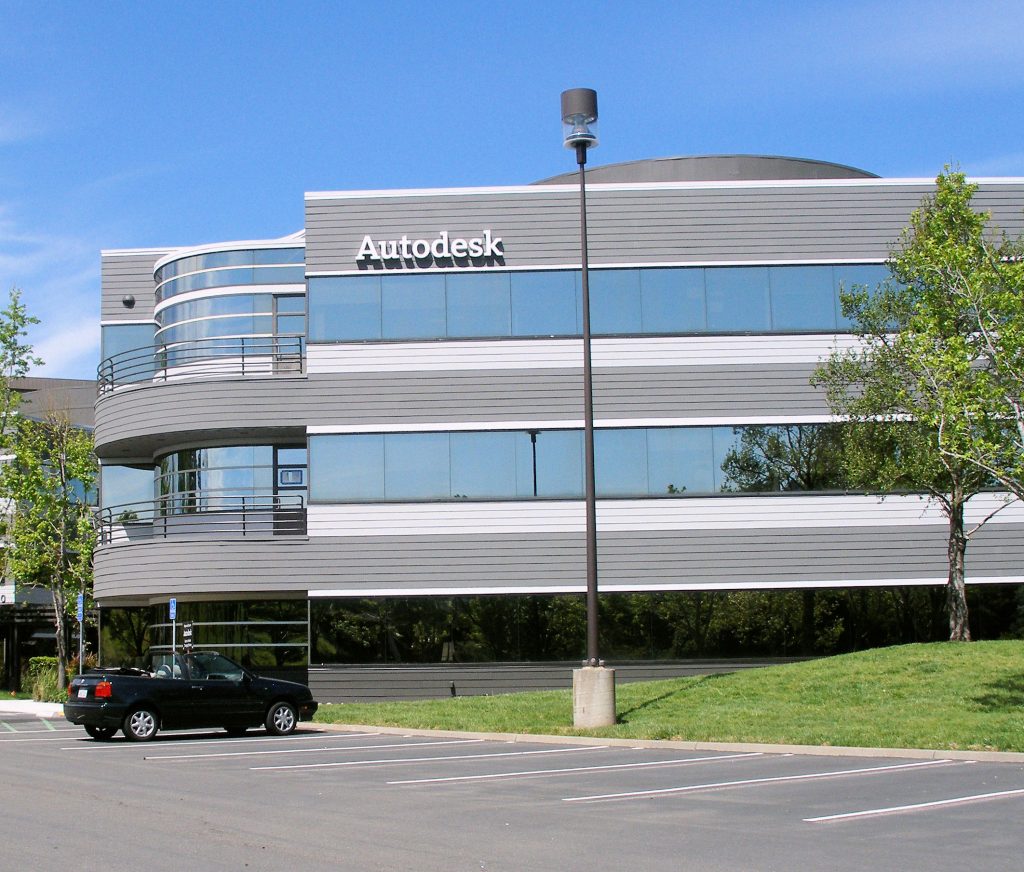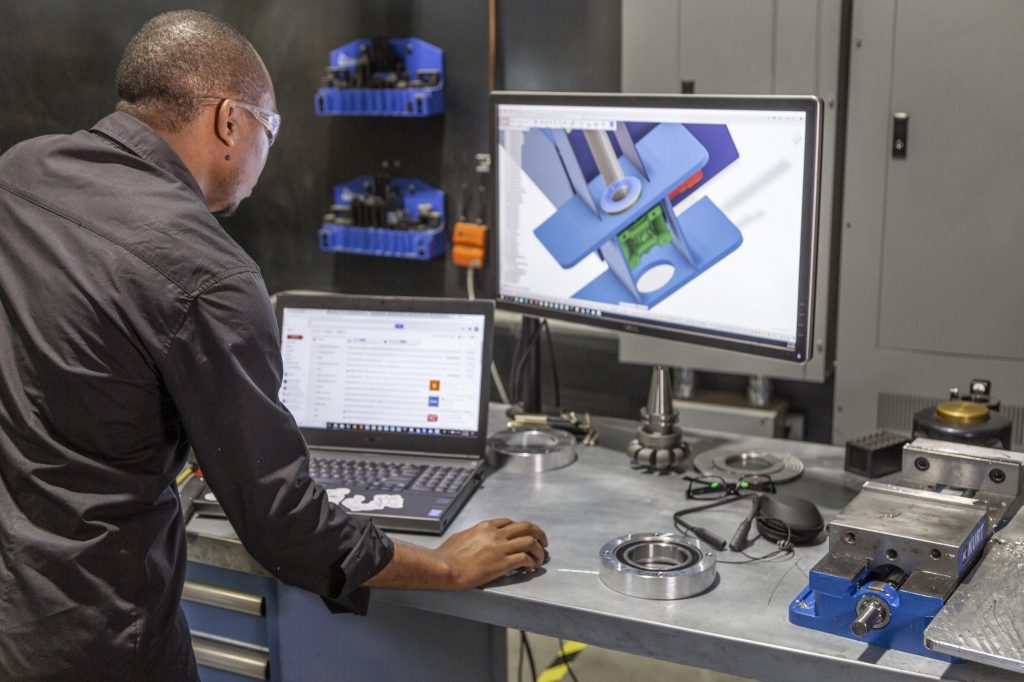3D design software developer Autodesk (NASDAQ: ADSK) has reported annual revenue growth of 12% within its Q1 2022 financial results.
Autodesk’s Q1 2022 turnover of $989 million, represents a $103 million increase on the $886 million it generated in Q1 2021, and a slight improvement on the $955-970 million projected for the quarter. The firm’s rapid growth can mainly be attributed to a jump in its Subscription Plan revenue, which rose 18% between Q1 2021 and Q1 2022 thanks to an increase in its renewal rates, and it now has over 5 million subscribers.
On Autodesk’s earnings call, its CEO Andrew Anagnost explained how the firm has benefited from “waning uncertainty” and “growing confidence in its end markets.” “An acceleration in new business, solid execution, and a resilient subscription business model delivered a strong start to the new fiscal year,” said Anagnost.
“As the world rebuilds after the pandemic, Autodesk’s purpose – a better world designed and made for all – has never been more important, and underpins our confidence this year and well into the future,” he added.

Autodesk’s Q1 2022 financials
Autodesk reports its financials in an orthodox fashion across calendar years, and the firm breaks down its revenue under its Subscription and Maintenance Plan divisions, as well as into ‘Design’ and ‘Make.’ The company’s Design arm, comprising revenue gained from its maintenance, product subscriptions and EBAs, including its AutoCAD sales, generated $885 million during Q1 2022, 11% more than in Q1 2021.
Over the same period, Autodesk’s Make segment revenue rose even more, increasing by 21%, something Anagnost attributed to the firm’s shift to a cloud-based model and growing crossover between its divisions. “The digitization of AEC, convergence of design and make, and our expansion into adjacent verticals through organic investment and acquisitions, are growing our total addressable market,” said Anagnost.
“The evolution of our business model, the value generated by the growing connectivity of our platform for new and legacy customers, and the hardening of our systems to non-compliant users, enable us to attract and retain more of that potential opportunity, growing our ecosystem and the usage and value we generate from it,” he added.
Another key driver behind Autodesk’s revenue increase lies in its billings, which jumped 10% between Q1 2021 and Q1 2022 to $974 million, reflecting its crackdown on unlicensed users. Anagnost said on the firm’s earnings call that during Q1 2022, it managed to convert a non-compliant Indonesian adopter into one of its largest clients yet, in a move that’s since seen its software licensed to over 500 branches.
Finally, in terms of geographical area, Autodesk’s EMEA-based business remained its highest-earning in Q1 2022, generating $383 million, but its APAC division became its fastest growing, rising 20% between Q1 2021 and Q1 2022 to $215 million. In the U.S, meanwhile, the firm’s revenue grew, but at a comparatively slower pace, increasing 8% from the $301 million reported in Q1 2021 to $324 million in Q1 2022.
| Autodesk Revenue ($) | Q1 2021 | Q1 2022 | Difference (%) |
| Subscription Plan | 803m | 948m | +18 |
| Maintenance Plan | 62m | 19m | -69 |
| Design | 798m | 885m | +11 |
| Make | 67m | 82m | +21 |
| Total Revenue | 886m | 989m | +12 |
Autodesk’s Fusion 360 focus
During Q1 2022, Autodesk invested significantly in organic growth, upgrading its Inventor package to unlock accelerated product R&D for adopters of its AutoCAD and Revit programs. Within its Vault software, the firm also rolled-out an app that enables real-time monitoring, while Fusion 360 users have benefited from the addition of integrated extensions that provide advanced design functionalities.
Thanks to these new features, Autodesk has been able to continue building on its Fusion 360 user base, reaching a total of 152,000 commercial subscriptions by the end of Q1 2022. What’s more, Anagnost said during the firm’s earnings call that the software has now arrived at a “tipping point,” and he remains “excited” about its future, before highlighting the breadth of its latest applications.
In one such case, a UK-based producer of architectural facades adopted Fusion 360, and found that the program’s multi-sheet layouts enabled it to significantly cut its waste. Elsewhere, in a very different application at Danville Community College, students deployed the software to win a U.S. Department of Defense design contest, proving the platform’s versatility when it comes to expediting production workflows.
In April 2021, Autodesk also announced the acquisition of Product Lifecycle Management (PLM) software developer Upchain, with the aim of supplementing its organic growth prospects, and moving forwards, it intends to combine its cloud-based offering with Fusion 360 to enable simplified data-sharing between engineers and manufacturers.
“The convergence of data and processes is transforming the industry,” said Anagnost at the time of the move. “By integrating Upchain with our existing offerings, Autodesk customers will be able to easily move data without barriers and will be empowered to unlock and harness valuable insights that can translate to fresh ideas and business success.”

Raising the bar for FY 2022
For the remainder of the financial year, Autodesk expects to see its client retention rate remain at a level of 100-110% in addition to an improvement in the wider economy. As a result, the firm has increased its FY 2022 revenue guidance to between $4.305 billion and $4.385 billion, which if realized, would constitute a 14%-16% year-on-year increase.
The company’s returning CFO Debbie Clifford, wrapped up its earnings call by adding that its Q1 revenue result represents the firm’s “trough,” and that it will start to reap the benefits of its acquisitions as well as positive seasonal trends during H2 2022, enabling it to continue its momentum and build towards sustained growth through FY 2023.
“Our accelerating momentum in fiscal 2022 will propel us into fiscal 2023, and I am therefore confident in our fiscal 2023 revenue growth potential,” concluded Clifford. “As I begin to look beyond fiscal 2023, the digital transformation of the industries we serve, our sustained investment in the cloud and our flexible business model, give us a robust platform for double-digit growth.”
To stay up to date with the latest 3D printing news, don’t forget to subscribe to the 3D Printing Industry newsletter or follow us on Twitter or liking our page on Facebook.
For a deeper-dive into additive manufacturing, you can now subscribe to our Youtube channel, featuring discussion, de-briefs and shots of 3D printing in-action.
Are you looking for a job in the additive manufacturing industry? Visit 3D Printing Jobs for a selection of roles in the industry.
Featured image shows a 3D printed model being optimized using Autodesk’s Fusion 360 software. Image via Autodesk.



